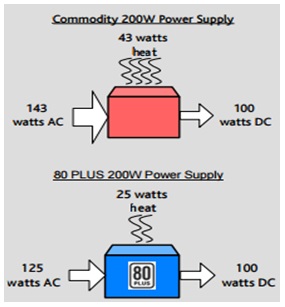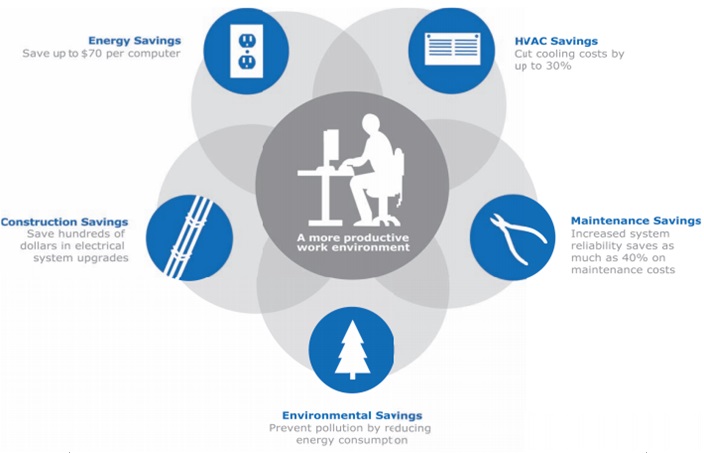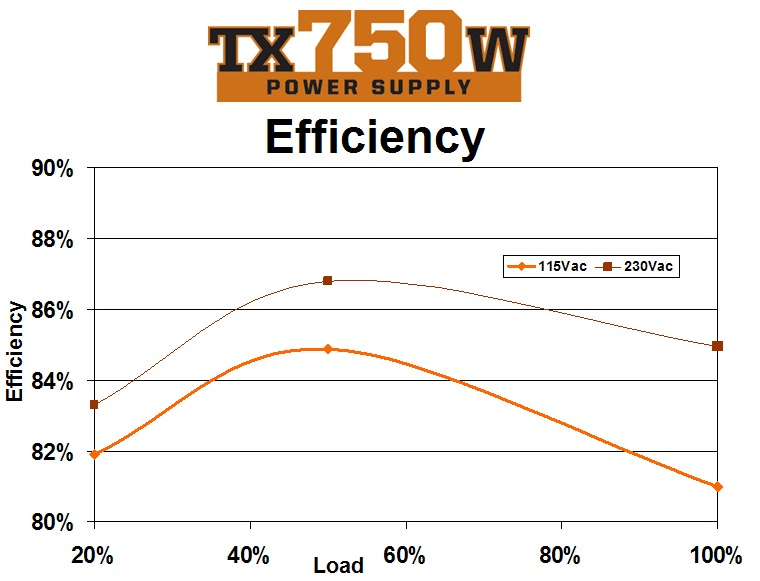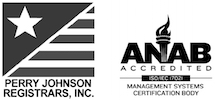Understanding the 80 PLUS® Certified Power Supplies
Overview
Efficiency. This vital asset is usually ignored when it comes to the qualifications of power supply. First let’s take a look at what efficiency means and how it’s important to consumers. To have energy efficient computers, means preserving more power then wasting it. Energy being wasted results in money being wasted. This is just another obstacle that consumers have to deal with.
Let us introduce the 80 PLUS certification program. Indeed, PC’s demand higher amount efficiency, so this is where it gets attractive in the eyes of consumers. Power supplies are extremely important for a computer’s system. It is imperative that people choose the most effective supplies that will bring a stable environment for computers. These power supplies absorb AC power (alternating currents) from a wall while transforming it into DC power (direct current). Output power divided by input power.
Reliability
However, power can be lost during the transformation and drained as heat. This is where the 80 PLUS can become so beneficial. Over heating can become a major problem for computer system failure. Too much heat in power supplies demeans its reliability. But in order to reduce heat, 80 PLUS power supplies can increase a computer’s reliability up to 40% according to the Power Electronics Strategies. It decreases the demand for loud computer fans and lowers electric bills in the long run. Below is a diagram that compares the heat output of 80 PLUS and regular power supplies.

Power Quality
Normal computer power supplies have low power factors, thus resulting in overheating. Because of this overheating, factories are forced to use oversize conductors that can substantially increase a cost of the electrical system. According to 80PLUS.org, three benefits are guaranteed with 80 PLUS computer power supplies.
• “Higher power factor reduces current draw and allows more computers to be operated on the same branch circuit without the need for costly electric infrastructure upgrades.” • “Lower triplen harmonics place less stress on neutrals and increase the life of distribution transformers.” • “In new construction situations, smaller and less expensive distribution systems can be constructed when 80 PLUS computers are considered in the planning process.

When consumers buy power supply for computers, they look at the wattage power and then choose a power supply that matches it. But this can only be achievable efficiently with an 80 PLUS and its different levels of certifications. New Egg Business describes 80 PLUS as a “voluntary certification program that tests computer power supply efficiency. With the intention to promote environmental friendliness and energy efficiency, 80 PLUS certification is given to power supply models that meet an energy efficiency minimum.” However the power supply’s efficiency is different towards different loads. 80 PLUS provides Bronze, Silver, Gold, and Platinum levels.
Here is a chart showing different requirements depending on certification level. 
Chart source from neweggbusiness.com
Levels of 80Plus certification for 115 V consumer-grade power supplies and their efficiency requirements
80 PLUS Certification Levels Efficiency at 10% Load Efficiency at 20% Load Efficiency at 50% Load Efficiency at 100% Load
80 PLUS — 80% 80% 80%
80 PLUS Bronze — 82% 85% 82%
80 PLUS Silver — 85% 88% 85%
80 PLUS Gold — 87% 90% 87%
80 PLUS Platinum — 90% 92% 89%
80 PLUS Titanium 90% 92% 94% 90%
80Plus certification for 230 V server-grade power supplies and their efficiency requirements
80 PLUS Certification Levels Efficiency at 10% Load Efficiency at 20% Load Efficiency at 50% Load Efficiency at 100% Load
80 PLUS — — — —
80 PLUS Bronze — 81% 85% 81%
80 PLUS Silver — 85% 89% 85%
80 PLUS Gold — 88% 92% 88%
80 PLUS Platinum — 90% 94% 91%
80 PLUS Titanium 90% 94% 96% 91%
The essential idea is the amount of power being given compared to the amount of power being absorbed. Higher levels result in more power being saved. This system tests the power supplies for efficiencies at 20, 50, and 100 percent loads. In order to have certification, these power supplies need to be at 80 percent efficiency. In order to save more money in the long run, power supplies need a higher efficiency amount. “Power supplies do not present a constant efficiency. The graph for efficiency is a bell curve, where the power supply presents its best efficiency when delivering 50% from its labeled load” Below is a graph showing an example of an efficiency curve.
The demand for 80 PLUS certifications are increasing in the industry. It is important to be aware of false advertising and fake 80 PLUS badges. To know that you are not presented with fake 80 PLUS claims, check the 80PLUS.org website that provides a list of their certified powers. There is no doubt that 80 PLUS provides major benefits of energy efficiency and product reliability and reducing the need to spend on expensive upgrades.




